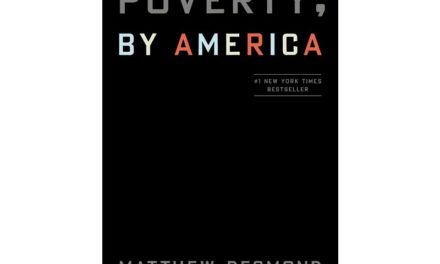These poverty rate estimates from the U.S. Census Bureau would mean that the poverty rate in Memphis has increased 10% since the 2010 Census (we’ve previously cautioned about unquestionable accepting these estimates).
The estimates are that the following percentages are living in poverty in Memphis:
People under 18 years of age – 44.3%
People 18-65 — 24%
People over 65 years of age — 15.9%
African-Americans — 33.6%
Hispanics — 43.1%
Whites — 11.9%
Asians — 28.7%
From Governing:
Since the Great Recession, large cities faced with rising unemployment and poverty have sought to create local action plans and public-private partnerships to reverse troubling economic trends. One of the first to do so was the city of Savannah, Ga., which initiated an anti-poverty task force as early as 2003. At the time, civic leaders were alarmed to find the local poverty rate stuck at 22 percent, prompting them to form Step Up Savannah, a nonprofit geared to increase employment and income among the city’s poor. In recent years, other anti-poverty commissions in other cities, such as Richmond, Va., have cited Savannah as model. Nonetheless, new data from the U.S. Census Bureau shows that more Savannah residents live below the federal poverty line than at any point in recent memory: an estimated 38,487 people, or 28.6 percent of the city’s population.
“The poverty numbers are depressing,” says Suzanne Donovan, a spokeswoman for Step Up Savannah. Unfortunately, Savannah is far from unique. Among cities and towns with at least 100,000 people, 54 places recorded poverty rates above 25 percent last year. Detroit, which filed for bankruptcy in July, had a poverty rate of 42.3 percent, the highest of any big city or town in the country. Syracuse, N.Y.; Hartford, Conn.; Cleveland; and Lansing, Mich., also had high poverty rates, ranging from around 35 percent to 38 percent.
For an individual in 2012, the federal poverty level was $11,170. For a family household of three, it was $19,090. Although the federal poverty level is useful for making comparisons to past years, it’s an imperfect instrument for delineating economic status. Past research by the Urban Institute found that even when families earned double the federal poverty level, many still had trouble covering expenses related to food and housing. On the other end of the spectrum, college students who earn a meager annual income but still have parents covering their cost of living might be considered below the poverty line, skewing poverty rates for college towns.
The national poverty rate did not budge from last year and was much lower than in most urban areas: 15.9 percent. That was a welcome change, given that the rate had increased incrementally every year since 2007. But poverty was still higher than the national average among families with single mothers (31.8 percent), families with three or four children (28.3 percent) and young families with children under 18 (18.8 percent). It was also more prevalent among some minorities. For instance, for white Census respondents, the poverty rate was 13 percent, but for black or African-American respondents, it was 28.1 percent; and for Hispanic or Latino respondents, it was 25.4 percent.
The Center for Law and Social Policy (CLASP) published a memo in September that cited several federal programs that remain key to helping poor families, such as the Earned Income Tax Credit, the Supplemental Nutrition Assistance Program (SNAP or food stamps) and unemployment insurance. The federal government and its state counterparts have a bigger influence over reducing poverty than cities or towns, says Olivia Golden, executive director of CLASP. Nonetheless, she notes that a handful of local governments have helped by increasing the minimum wage and by requiring that businesses offer paid sick days. In the past decade, cities have also partnered with banks and nonprofits to help low-income residents save money for large assets, such as a home, car or college tuition for their kids.
Last week, Syracuse Mayor Stephanie Miner told The Post-Standard that she’s trying to improve economic conditions by building affordable housing, welcoming immigrants to her city, pursuing federal aid and supporting the higher education nonprofit, Say Yes, which offers college scholarships to inner-city youths. In 2012, Syracuse recorded a four-year high for its poverty rate and unemployment rate. “Cities have limited leverage over the big economic challenges,” Golden says.
As Governing previously reported, some cities have opted to create new offices or centers dedicated to alleviating local poverty. Though each approach is slightly different, they represent a growing interest among urban governments to:
* attract new funding sources for training and employing low-income residents;
* improve data collection of anti-poverty programs and distribute resources to services with a record of success;
* and convene stakeholders from city, county and state departments, but also private-sector organizations that share a goal in educating, training and employing impoverished residents.
One of the ways Step Up Savannah sought to lift residents out of poverty was by using businesses as facilitators in connecting low-wage workers with public assistance programs. Since 2009, about 10 businesses have agreed to let the nonprofit meet with its employees and even screen new hires for public assistance eligibility. “It was a big breakthrough,” says Donovan. “Many employers do not like to acknowledge that the wage level that they’re offering means their own people do not have enough money at the end of the month to feed their family.”
Last year Step Up Savannah interacted with 12,510 people through a range of services, including job placement programs, financial literacy classes and assistance with tax returns. Still, the estimated number of local residents living in poverty is triple the population served by Step Up Savannah. “With the poverty rate going up, we are going to be working to increase the numbers that we’re touching,” Donovan says. With an annual budget of $800,000, “you’re talking about a resource question.”



